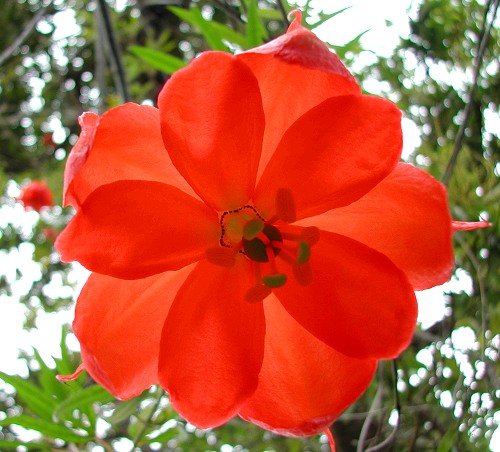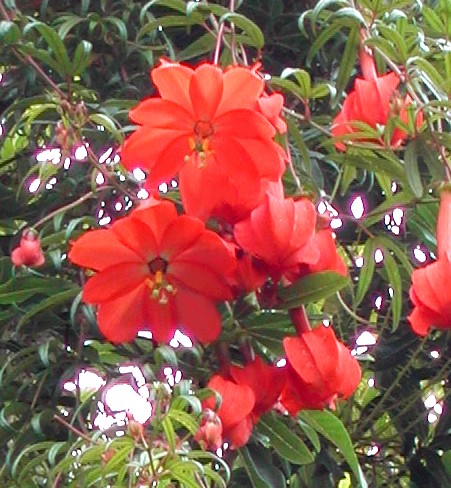Passiflora parritae
Strange Wonderful Things
Rare and exotic plants & seeds
|
 |
|---|
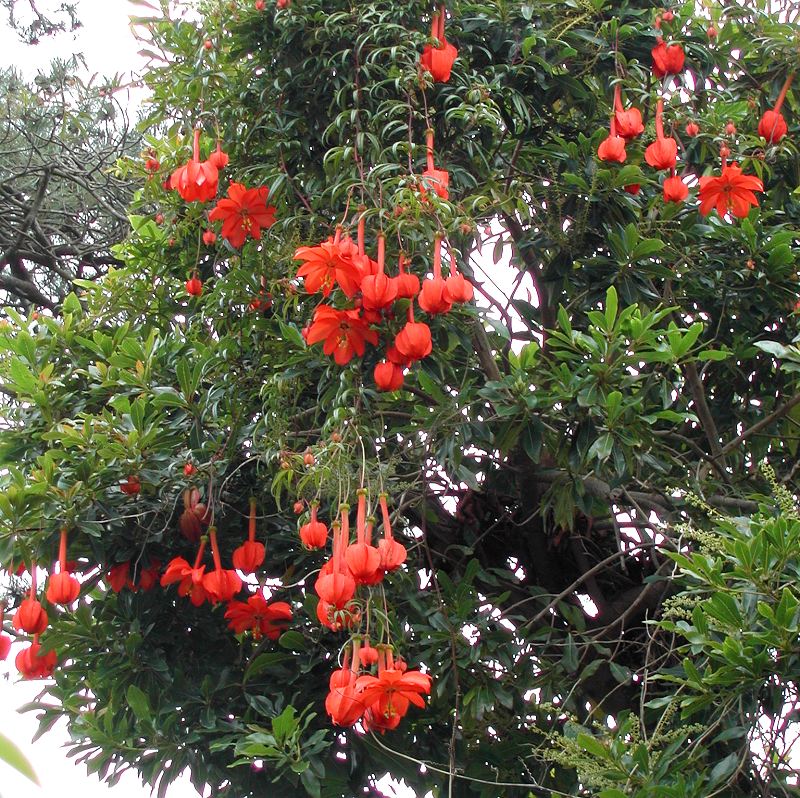
The holy grail of passionflowers, Passiflora parritae
is as rare as it is beautiful. Possibly extinct in the wild, this
species is almost never seen for sale. Its stunning flowers might be
the largest of all
Passifloras. This cool-climate species is not for everyone, but for
those who can provide the right conditions, it is a delightful
treasure. At least enjoy the
photos!
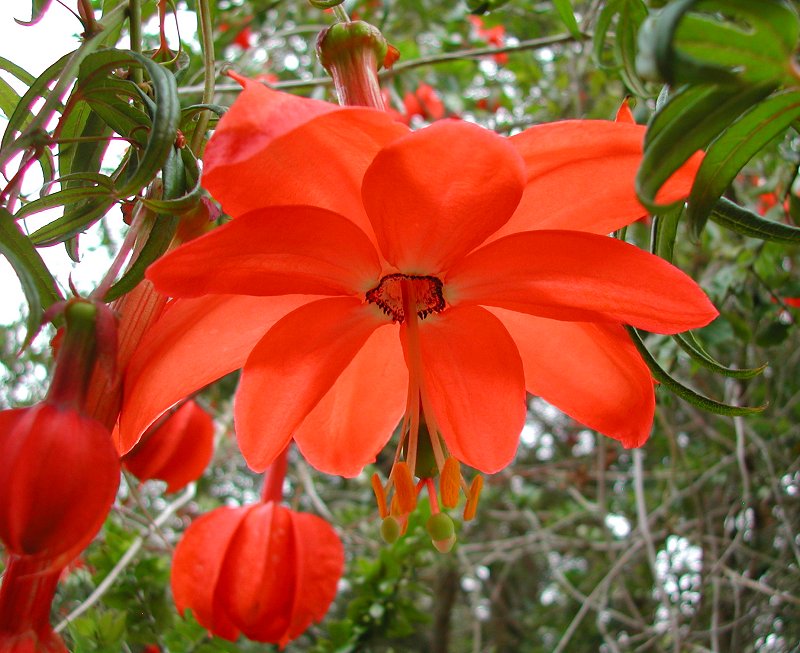
Passiflora parritae
comes from the mountain forests of Colombia. It blooms from
June through October or November here in San Francisco. The 5-6 inch
wide blooms are an exquisite shade of peachy-orange. The flower tubes
are unusually long,
as are the stems. These enable the blooms to swing in the breeze, which
attracts its pollinator, a local species of hummingbird. Unfortunately
the hummingbird has
moved to higher elevations due to climate warming, leaving Passiflora parritae to dwindle in numbers without a pollinator. It is now critically
endangered, and possibly gone in the wild.
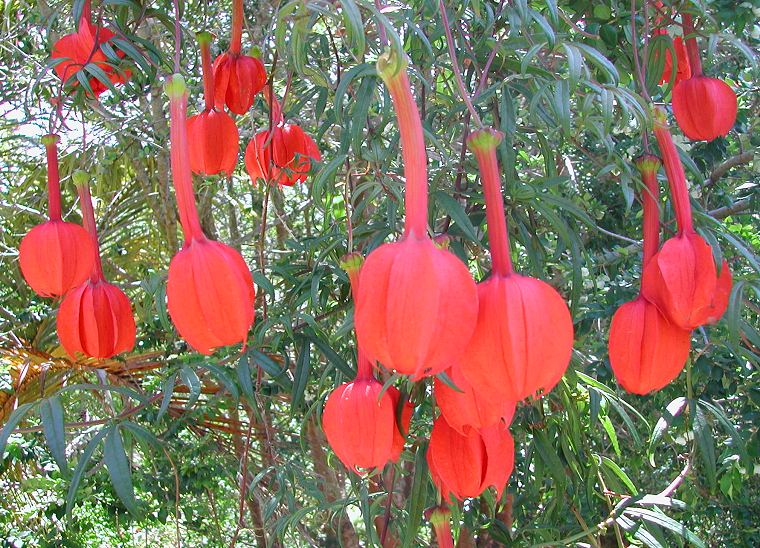
Like
most other Tasconia-type Passifloras, this one is heat-sensitive, and
will drop its blooms
if temperatures climb into the 90s (>32°C). If you happen to live
along the coast of California, the vine should do well outdoors.
Elsewhere, it will probably
need to be grown in a climate-controlled room, preferably below 80
degrees F (27°C), with nights below 65° F (18°C). The vine normally
climbs through trees, where it
can choose how much sun it gets. You may grow it along a large trellis,
provided that it gets some protection from strong afternoon sun. It
can probably survive a
few degrees of light frost, but it's best to protect it from all frost. Passiflora parritae
is very hard to propagate, which is partly why it's so unavailable.
